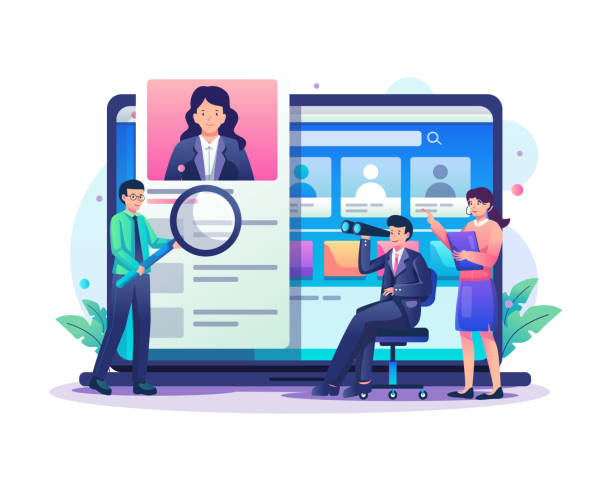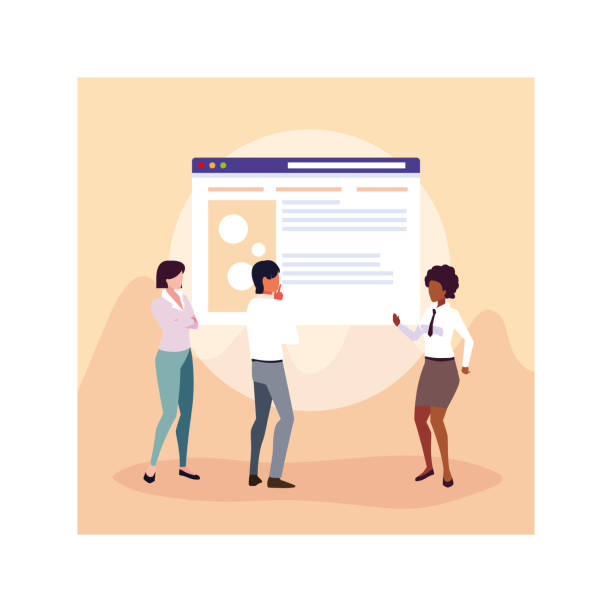Introduction to On-Page SEO and Its Importance
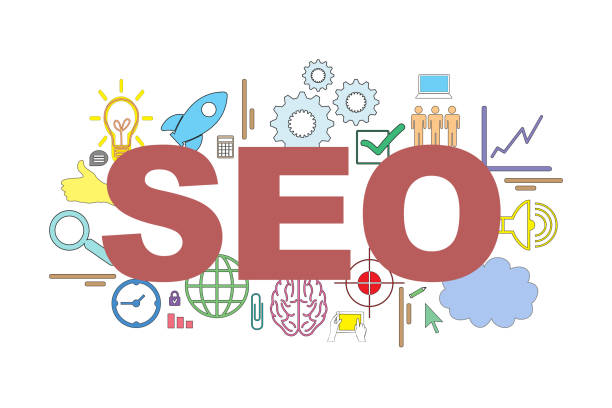
In today’s competitive world, Search Engine Optimization (SEO) is considered one of the most important digital marketing strategies for businesses and websites.
Among these, On-Page SEO refers to a set of actions taken within the website and on its content to improve its ranking in search results.
This article provides an educational and explanatory approach to a deeper understanding of this concept and helps you grasp its importance.
Suppose you have extremely valuable content, but if search engines cannot correctly understand or access it, no one will see it.
#On-Page_SEO is precisely where it comes into play, creating a bridge between your content and search_engine_crawler_bots.
The main goal of On-Page SEO is to send clear signals to search engines about the topic and quality of your content.
This not only helps with better ranking but also improves user experience, as relevant and organized content is easily understandable.
Many internet_marketing professionals believe that without a strong On-Page SEO strategy, your efforts in other SEO areas, such as Off-Page SEO, will not yield desired results.
This section is the most fundamental basis for any website looking to be seen in the online space.
Paying attention to small details such as titles, meta descriptions, URL structure, and image optimization can make a big difference in your website’s performance and drive more organic visitors to you.
In the rest of this article, we will expertly and guidely examine various dimensions of this field.
Do you dream of a thriving online store but don’t know where to start?
RasaWeb is your comprehensive e-commerce website design solution.
✅ Attractive and user-friendly design
✅ Increased sales and revenue⚡ Get free consultation
Key Factors of On-Page SEO for Optimization

To achieve effective On-Page SEO, a set of key factors must be considered, each playing a vital role in search engines’ understanding of your content.
This section, in a specialized and guiding manner, examines the most important of these factors.
The first and perhaps most crucial factor is the Page Title (Title Tag).
The page title should include your main keyword and be sufficiently appealing to users.
This title is the first thing users see in search results.
Following that is the Meta Description, which, although not directly affecting ranking, plays an important role in click-through rate (CTR) and should be an attractive, keyword-rich summary of the page’s content.
Additionally, using Heading tags (H1-H6) for content organization and highlighting subheadings is very important.
H1 is typically the main title of the page and should include the keyword, while H2 to H6 are used to organize different sections of the content.
Image optimization is another important aspect of On-Page SEO.
By using Alt Text containing keywords and compressing images to improve page load speed, you can improve your website’s ranking.
Also, Schema Markup helps search engines better understand your content and display it more attractively in search results (such as Rich Snippets).
These elements together provide a solid foundation for a strong On-Page SEO strategy, leading to greater visibility and quality traffic acquisition.
Keyword Research and Its Role in On-Page SEO
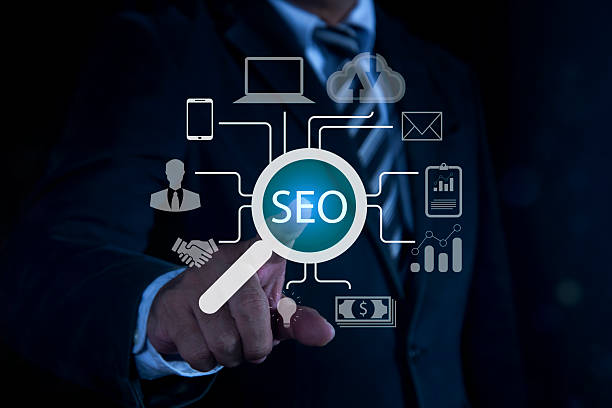
Keyword research is the backbone of any successful On-Page SEO strategy.
This analytical and educational process helps us understand what words and phrases our target audience types into search engines to find the content they need.
Without a proper understanding of user search needs, all our internal optimization efforts might be fruitless.
The first step in keyword research is identifying phrases most relevant to your business or content.
These phrases can be short-tail keywords with high search volume and high competition, or long-tail keywords that have less search volume but are much more targeted and less competitive.
Keyword research tools such as Google Keyword Planner, Ahrefs, Semrush, and AnswerThePublic can be helpful in this process.
These tools provide information about search volume, competition level, and related keywords.
After identifying keywords, you should naturally incorporate them into your content: in the page title, in headings, in introductory paragraphs, in the main text, and even in Alt Text images.
The importance of Keyword Density was high in the past, but today, the quality and naturalness of using keywords and Latent Semantic Indexing (LSI Keywords) are more emphasized.
This helps search engines better understand the main topic of your content and display it to relevant users.
Ultimately, keyword research is an ongoing process and should be regularly updated as user behavior and search engine algorithms change.
This table introduces some of the most commonly used tools in this area:
| Tool Name | Main Use | Type (Free/Paid) |
|---|---|---|
| Google Keyword Planner | Keyword identification, search volume | Free (requires Google Ads account) |
| Ahrefs Keywords Explorer | Comprehensive keyword analysis, backlinks, competitors | Paid |
| Semrush Keyword Magic Tool | Keyword analysis, content ideation | Paid (limited free version) |
| AnswerThePublic | Question keywords, pre-position phrases | Free (limited version) |
| Ubersuggest | Keyword and competitor analysis | Free (limited version) |
Content Optimization for On-Page SEO
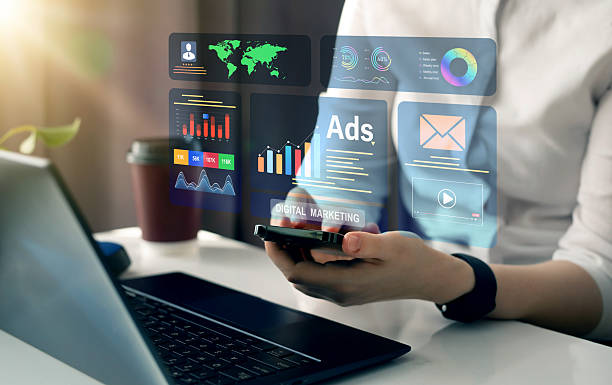
Content is king! This old saying still holds true in the world of SEO, but content optimized for On-Page SEO is like the crown jewel.
This section is a comprehensive guide to producing valuable and SEO-friendly content.
Producing high-quality content relevant to target keywords is the most crucial component of On-Page SEO.
Your content should not only be understandable to search engines but also engaging, useful, and readable for users.
First, your content must be original and unique.
Copying content from other websites not only doesn’t help your ranking but can also lead to penalties from search engines.
Long-form content often performs better in search results because it provides more opportunities for deeper topic coverage and natural use of relevant keywords.
Using subheadings (Headings), short paragraphs, lists (Bulleted Lists), and images/videos helps with content readability and improves user experience.
The first and last paragraphs of each section are particularly important, as search engines pay special attention to these parts.
Also, the intelligent use of primary keywords and their synonyms throughout the text, without appearing spammy or unnatural, is essential.
Remember that the ultimate goal of content production is to address the user’s Search Intent.
Is the user looking for information? To buy a product? Or to find a specific solution? Your content must meet this need.
This approach ensures that your content not only ranks high but also genuinely helps users and guides them toward your desired action.
Are you frustrated by your online store’s low conversion rate?
RasaWeb, with its professional e-commerce website design, is your definitive solution!
✅ Increase your sales and revenue
✅ Unparalleled user experience for your customers
⚡ Get a free consultation right now!
The Importance of URL Structure and Internal Linking in On-Page SEO
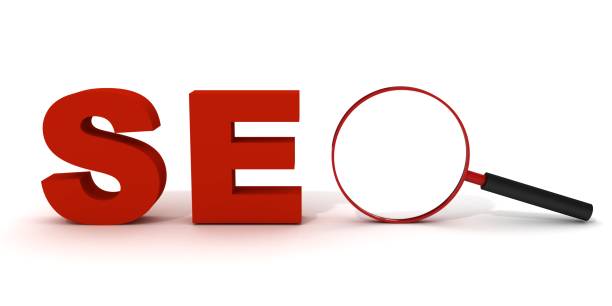
URL structure and Internal Linking are two important and often overlooked factors in On-Page SEO that can significantly impact your website’s performance.
This section, in a specialized and guiding manner, addresses the importance of these two factors.
An optimized URL should be short, descriptive, contain the main keyword, and be human-readable.
Avoiding long URLs full of incomprehensible characters is essential for both search engines and users.
For example, instead of yoursite.com/?p=123&cat=45, use yoursite.com/blog/seodakhli-rahenama.
This type of URL helps search engines understand the page’s topic faster and also improves click-through rate.
Regarding internal linking, this process means linking different pages of your website to each other.
This has several benefits: firstly, it helps search engines better understand your website’s structure and discover new pages.
Secondly, it distributes SEO power (Link Juice) among your website’s pages, helping your more important pages achieve better rankings.
Thirdly, it improves user experience, as users can easily navigate between related pages and discover more information.
When internal linking, use descriptive and keyword-rich Anchor Text.
For example, instead of “Click here”, use “Complete guide to On-Page SEO”.
A smart internal linking strategy can give more power to deeper pages of your website that might not be easily discovered by search engines, ultimately leading to an overall improvement in your SEO performance.
Technical On-Page SEO and Site Speed Improvement

In addition to the content aspects of On-Page SEO, technical factors also play a very important role in website ranking.
This section, in a specialized and informative manner, addresses technical On-Page SEO and the importance of site speed.
Page Load Speed is one of Google’s most important ranking factors and directly affects user experience.
Slow websites have higher bounce rates, and users are less inclined to stay on them.
Tools like Google PageSpeed Insights, GTmetrix, and Pingdom Tools can help you identify speed issues.
Common solutions for improving speed include image compression, using browser caching, minifying CSS and JavaScript files, and using quality hosting.
Responsive Design is also of high importance.
Given the increasing use of mobile devices for searching, your website must display well on all screen sizes.
Google has prioritized Mobile-First Indexing, meaning it considers the mobile version of your site for indexing and ranking.
Additionally, using Canonical tags to prevent duplicate content issues, and Robots.txt file and XML Sitemap to better guide search engine bots, are other important aspects of technical SEO.
While these may seem complex, they are vital for a comprehensive and effective On-Page SEO strategy.
The Role of User Experience (UX) in On-Page SEO
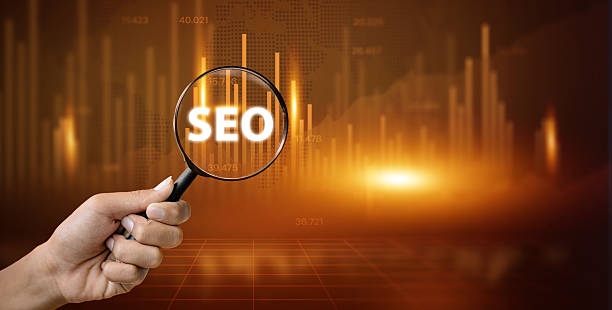
In recent years, the convergence between User Experience (UX) and SEO has become increasingly evident.
Google and other search engines are increasingly valuing user experience signals as ranking factors.
This section, in an analytical and explanatory manner, examines the role of UX in On-Page SEO.
A website with excellent user experience not only satisfies users but also sends positive signals to search engines.
When users can easily navigate your site, find the content they are looking for, and enjoy its design, their likelihood of staying on the site and interacting more increases.
UX factors affecting SEO include: responsive and mobile-friendly design (previously mentioned), page load speed, content readability (using appropriate font, sufficient text size, short paragraphs, and white space), intuitive navigation with clear and accessible menus, and ease of finding information.
Google recently introduced Core Web Vitals, which include metrics for evaluating page experience, such as Largest Contentful Paint (LCP), First Input Delay (FID), and Cumulative Layout Shift (CLS).
Improving these metrics directly helps improve SEO.
Low Bounce Rate and high Dwell Time on the site are strong indicators for search engines that your content is valuable and relevant.
Ultimately, focusing on user experience means building a website optimized not just for bots, but for your most important visitors – humans.
This approach naturally helps improve your On-Page SEO.
The table below addresses the importance of Core Web Vitals metrics.
| Metric | Description | Impact on UX and SEO |
|---|---|---|
| Largest Contentful Paint (LCP) | Time to load the largest visual content on the page | Content comprehension speed, reduced bounce rate |
| First Input Delay (FID) | Site’s responsiveness time to the first user interaction (e.g., click) | Site responsiveness, interactivity |
| Cumulative Layout Shift (CLS) | Measure of visual instability of content (unexpected shifting of page elements) | Page stability and aesthetics, preventing accidental clicks |
Engaging and Creative Content for Audience Attraction

One of the modern approaches in content marketing strategy, and consequently On-Page SEO, is the production of engaging and entertaining content.
In this section, we will examine how to create such content to attract and retain audiences.
The era of producing merely dry and formal educational content is over.
Today’s users are looking for a different experience; they want to be engaged, have their curiosity piqued, and even be entertained.
Engaging content, for example, in the form of a challenge, a poll, or an intriguing scenario, makes users think and encourages them to share their opinions.
This type of content can include: challenging questions in titles or text introductions, survey-based content, online contests and quizzes, or even Storytelling that immerses the reader in a narrative.
This approach is particularly effective in increasing user dwell time on the site and reducing bounce rate, both of which are strong positive signals for search engines.
Entertaining content, such as attractive infographics, short and creative videos, podcasts, or articles with an informal and humorous tone, can also attract significant traffic to your site.
When your content can make users laugh, think, or create a specific emotion in them, the likelihood of it being shared on social media also significantly increases.
These shares are considered “social links” and although they do not directly affect SEO, they can help increase brand awareness and ultimately attract more traffic and indirectly improve SEO.
The key point is that even in entertaining and engaging content, relevant keywords should be used naturally so that search engines can index it.
Tired of losing business opportunities due to not having a professional corporate website? Don’t worry anymore! With RasaWeb’s corporate website design services:
✅ Your brand’s credibility and professionalism will increase.
✅ You will attract more customers and sales leads.
⚡ Get a free consultation right now to start!
Analysis and Monitoring of On-Page SEO Performance

After implementing On-Page SEO strategies, the crucial stage of performance analysis and monitoring arrives.
This section is an analytical and specialized guide for evaluating the success of your internal optimization efforts.
Without continuous monitoring, you cannot identify the strengths and weaknesses of your strategy and apply the necessary improvements.
Various tools are available for this purpose, among the most important of which are Google Search Console and Google Analytics.
Google Search Console allows you to monitor your site’s performance in search results.
You can see which keywords your site is displayed for, how many clicks it receives, and whether there are any indexing or crawling issues.
The Coverage report in Search Console shows you which pages have been indexed and which have problems.
Google Analytics, on the other hand, provides detailed information about your website’s traffic, user behavior on the site, traffic sources, and conversion rates.
By analyzing this data, you can understand how users interact with your content, which pages are more popular, and what causes them to leave your site.
Key metrics for monitoring include: keyword rankings, organic traffic, Bounce Rate, Average Session Duration, Click-Through Rate (CTR), and conversion rate.
If you notice a decrease in organic traffic or an increase in bounce rate, this could be a sign that you need to review and improve your content or the technical aspects of your On-Page SEO.
Regular monitoring and using data for informed decision-making are key to maintaining and continuously improving your ranking in search engines and ensuring that your On-Page SEO efforts bear fruit.
Common Mistakes in On-Page SEO and Ways to Avoid Them
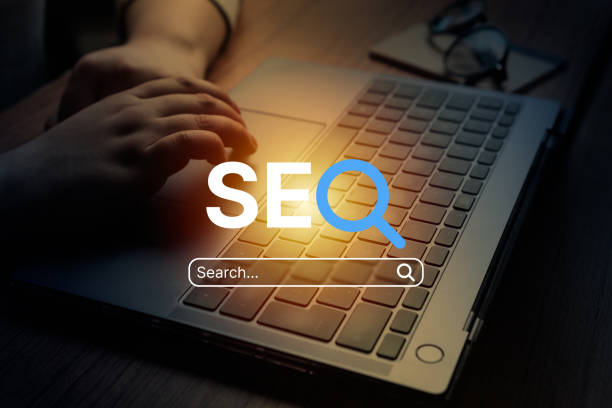
Even with the best intentions and knowledge, you might make mistakes in implementing On-Page SEO that, instead of improving, harm your website’s ranking.
This section, in a guiding and specialized manner, addresses the most common mistakes and ways to avoid them.
One of the most common mistakes is Keyword Stuffing.
Trying to cram too many keywords onto a page not only ruins the user experience but can also be identified by search engines as a spam technique and lead to penalties.
The solution is to use keywords naturally and in the correct semantic context, and instead of repeating, use synonyms and LSI keywords.
Another mistake is ignoring site speed.
Many websites have low speed due to heavy images, large JavaScript codes, and inappropriate hosting, which severely negatively impacts user experience and ranking.
Lack of mobile optimization is also a big mistake, as most searches today are done via mobile devices.
Make sure your site design is responsive.
Low-quality or duplicate content is another destructive factor.
If your content doesn’t provide enough value to the user or is copied from other sites, you cannot expect a good ranking.
Always produce unique, in-depth, and practical content.
Also, ignoring internal linking can prevent the transfer of SEO power within your site.
Strategically link your pages to each other.
Improper use of heading tags (e.g., using multiple H1s or not using them for structuring) can also send wrong signals to search engines.
Finally, lack of monitoring and analysis of On-Page SEO performance prevents you from identifying problems and opportunities.
By avoiding these mistakes and adhering to the correct principles of On-Page SEO, you can get the best results from your efforts and have a powerful presence in search results.
Frequently Asked Questions
| Question | Answer |
|---|---|
| What is a Meta Title and why is it important in On-Page SEO? | The meta title is the most important element of On-Page SEO, displayed at the top of the browser tab and in search results. This title helps search engines and users understand the main topic of the page and should include the primary keyword. |
| What role does Meta Description play in On-Page SEO? | The meta description is a short summary of the page’s content displayed under the title in search results. Although it does not directly affect ranking, its attractiveness can increase the click-through rate (CTR). |
| How should keywords be used in page content? | Keywords should be used naturally and relevantly in strategic locations such as the title, headings, first paragraph, and body text. Avoid keyword stuffing. |
| What is the importance of high-quality and comprehensive content in On-Page SEO? | High-quality, unique, informative, and comprehensive content that addresses user needs is of great importance. Search engines give higher rankings to content that provides real value. |
| What is the use of heading tags (H1-H6) in On-Page SEO structure? | Heading tags (H1, H2, H3, etc.) are used to structure content and indicate the importance of different sections. H1 is the main title of the page, and each page should have only one H1. Other tags are used for subheadings. |
| How to optimize images for improved On-Page SEO? | To optimize images, use descriptive Alt Text that includes relevant keywords, reduce the image file size without compromising quality, and use meaningful and relevant file names. |
| What are the characteristics of an SEO-friendly URL for On-Page SEO? | A friendly URL should be short, readable, descriptive, include primary keywords, and be free of extra characters. The URL structure should be hierarchical and logical to be understandable for both users and search engines. |
| How does Internal Linking help On-Page SEO? | Internal linking, by connecting related pages to each other, helps users and search engine crawlers better understand the site’s structure, transfers page authority, and increases user presence time on the site. |
| What is the impact of page load speed on On-Page SEO? | High load speed is crucial for both user experience and SEO ranking. Slower pages may be ignored by search engines and lead to an increased bounce rate. |
| Why is mobile compatibility (Mobile-Friendliness) very important in On-Page SEO? | Given the ever-increasing number of searches through mobile devices, having a responsive and mobile-friendly site is essential for user experience and ranking in search results (Google’s Mobile-First Indexing). |
And other advertising agency services of RasaWeb in the field of advertising
Smart Sales Automation: A fast and efficient solution for customer behavior analysis focusing on precise audience targeting.
Smart Custom Software: Professional optimization for customer behavior analysis using attractive UI/UX design.
Smart Link Building: A creative platform for improving customer behavior analysis using real data.
Smart Direct Marketing: A novel service for enhancing SEO ranking through Google Ads management.
Smart Link Building: Professional optimization for customer behavior analysis using intelligent data analysis.
And over hundreds of other services in the field of internet advertising, advertising consultation, and organizational solutions
Internet Advertising | Advertising Strategy | Advertorial
Sources
SEO Articles on ZoomitSEO News on FararuLatest News – SEO SearchYoung Journalists Club – SEO
? Is your business ready to leap into the digital world? RasaWeb Afarin Digital Marketing Agency, by offering specialized services including SEO-optimized website design and comprehensive online marketing strategies, paves your path to growth and visibility. With us, have a powerful presence on the web.
📍 Tehran, Mirdamad Street, next to Bank Markazi, Southern Kazeroon Alley, Ramin Alley, No. 6


